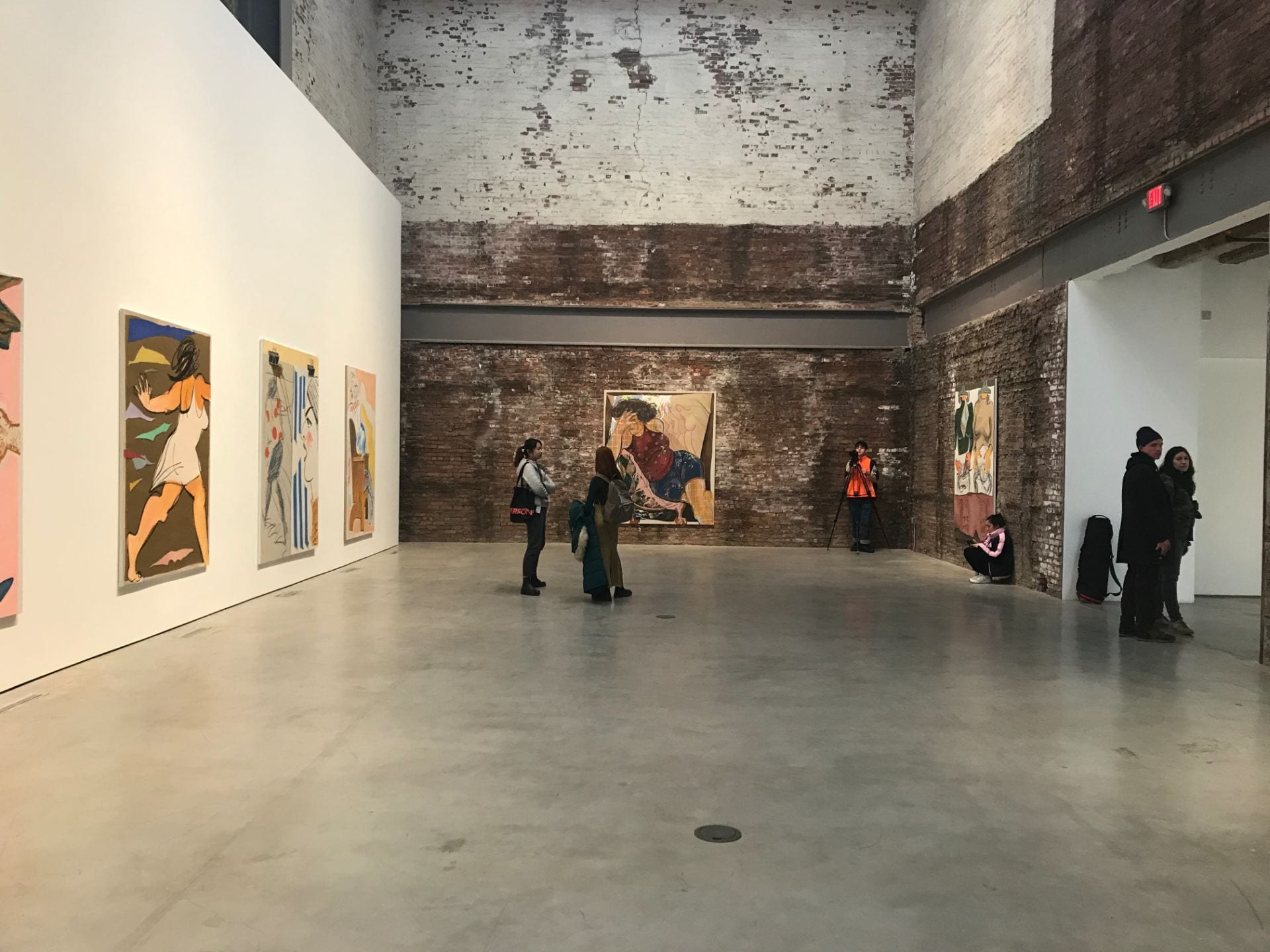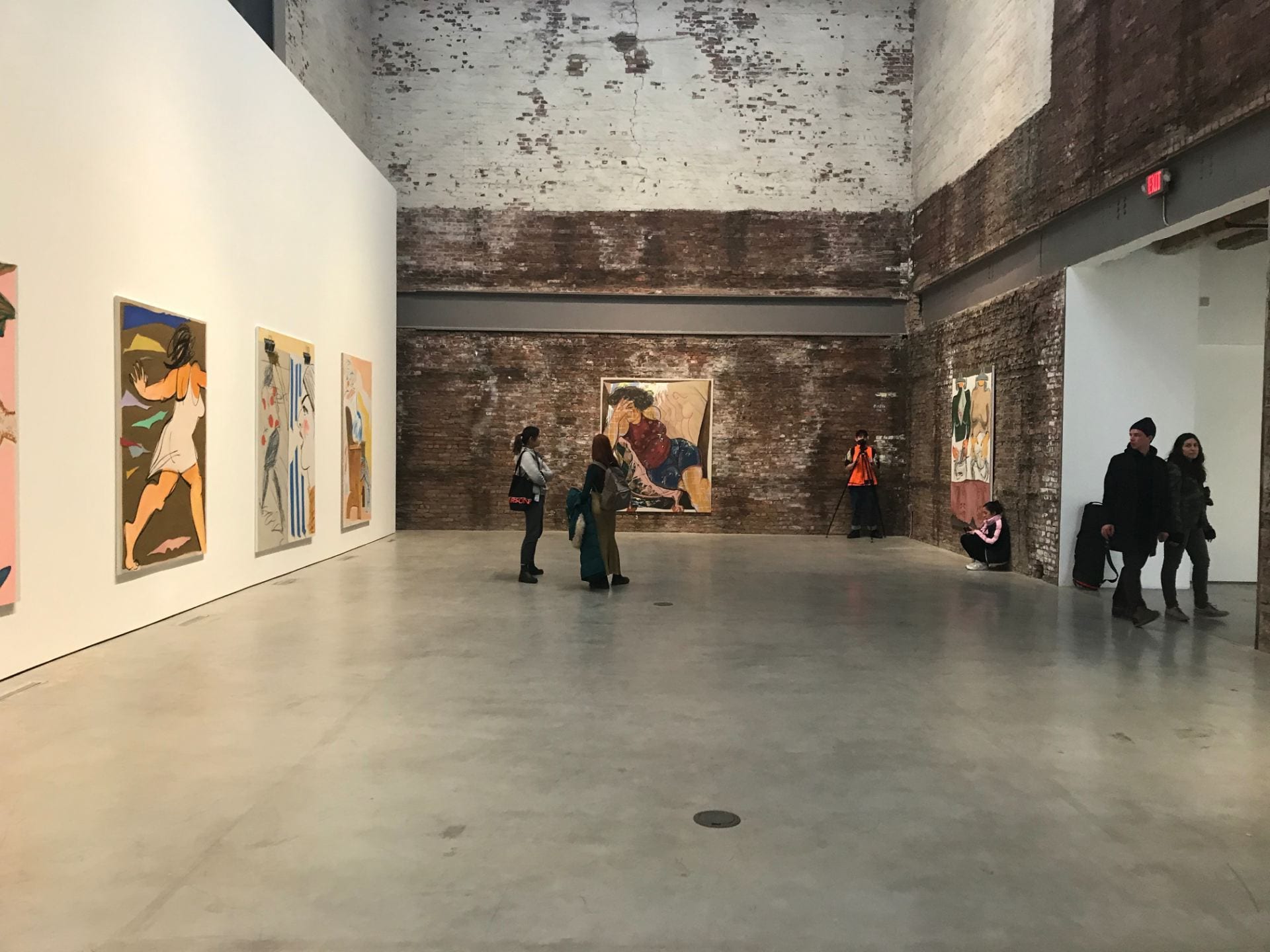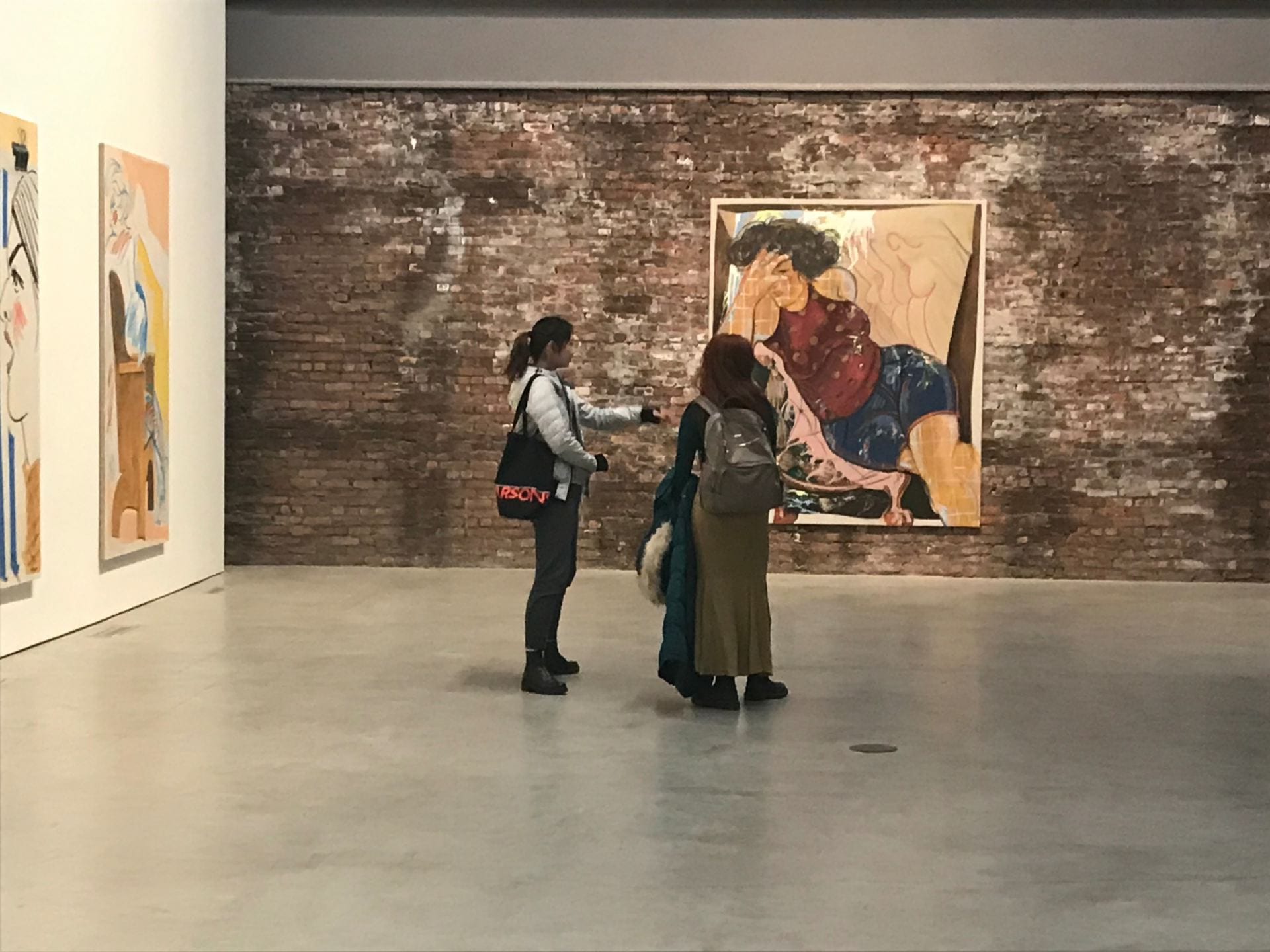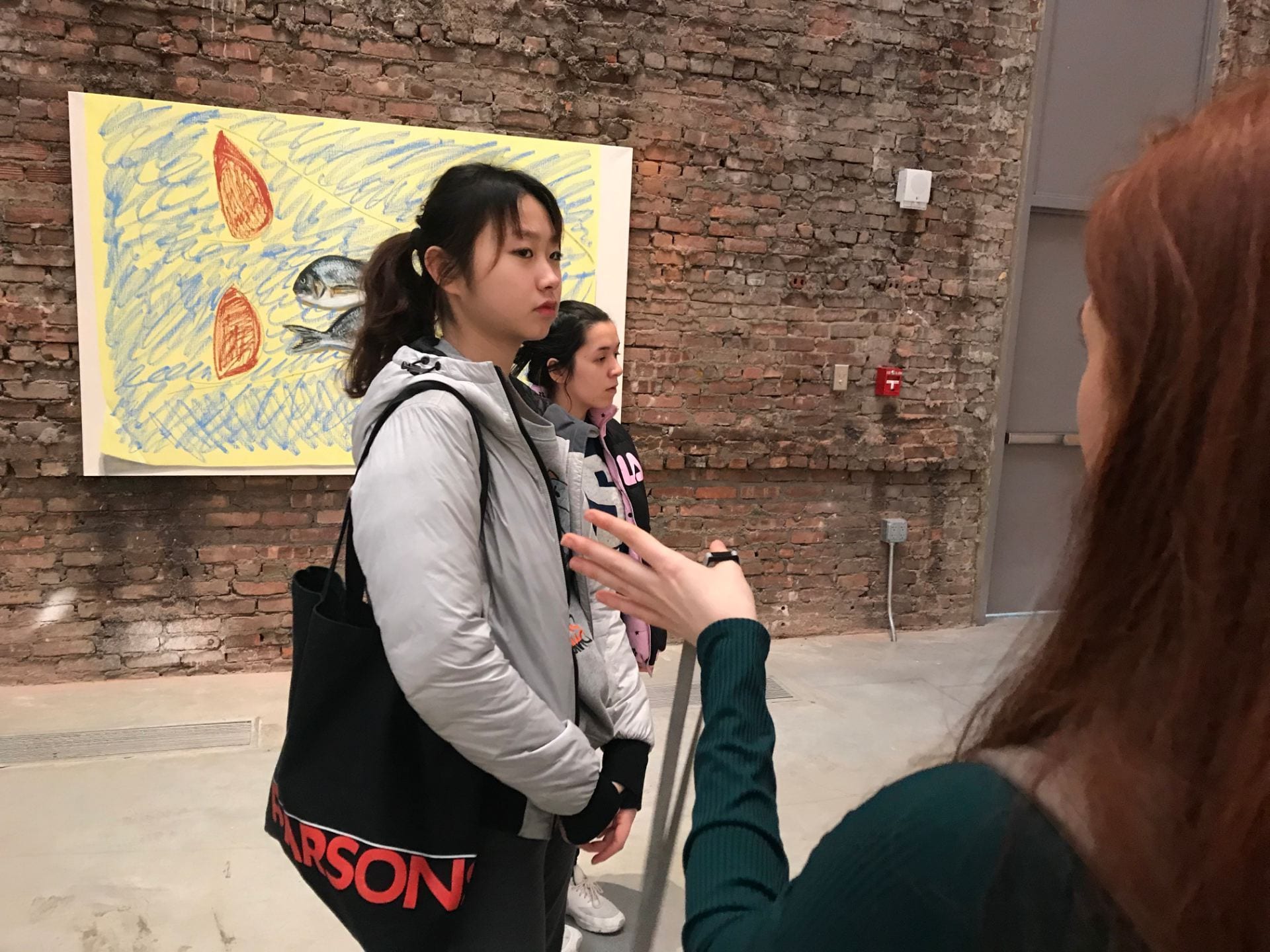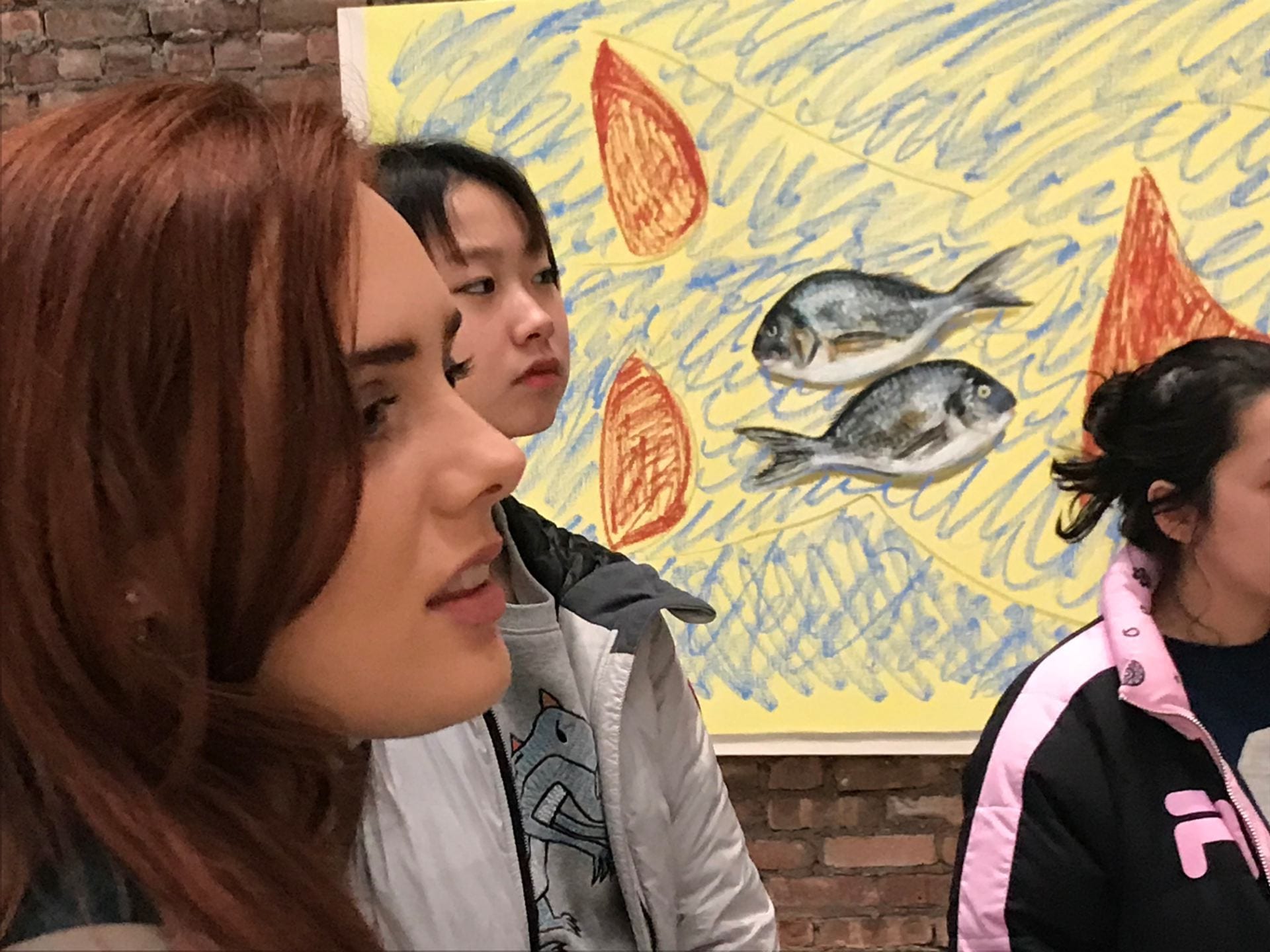Gavin Brown Enterprise Site Investigation Report
Margaret Chen, Will Severence, Si Ran Pang, Roy Raviv, Sara Truett
Looking into this site as a place and going in “blindfolded” with no expectations, created a clean palette for those entering this space for the first time. Our first thoughts on the space entering individually: cold, awkward and confusing. Gavin Brown’s prerogative in his career is curating art collections for retail, thus this space is designed for people to purchase art, in this forced stylistic space. Meaning, one couldn’t find a rococo piece in the current exhibition of “Vittorio Brodmann”. Though this specific location for the company is relatively new, circa 2016, the original gallery was in the West Village according to Douglas (1). The “new” site in Harlem, a former brewery, explains the “out-of-place” kitchen. The site itself is a conversation piece from the controversial location, intentions, aspects, and impact.
The site has key attributes that really add character to the interior as an interesting interior space, such as the free admission, which could speak to users as welcoming and inviting. Yet, experiencing the space counteracted with that as there wasn’t a formal greeting or any greeting for lack of the matter by the employees. The space seemed to lack an element of service design, which could explain the negative emotions towards the enterprise as a whole. Gavin Brown’s Enterprise seems like it would be a significant gallery among the elitists of the art world, which seems to attract the wrong crowd for the location.
The Enterprise itself, structurally, is the elephant in the room, or in this case, Harlem. Agreeing with Douglas(1) that “The subject is entirely based on real estate. It doesn’t touch on life or art. To talk about Harlem as a new, undiscovered art destination ignores the fact that, unlike SoHo in the ’60s or Chelsea in the early ’90s, this neighborhood has been a home, a community to generations. It also ignores that it has been a cultural epicenter for almost a century.” Looking into the direct impact of the residents in the area, according to (2)Schaffer & Smith “gentrification is lauded as the major hope for reversing the economic and social decline that still dominates the inner cities”. Though through personal experience, Harlem is already notorious for it’s own cultural rise of art and music at the turn of the 20th century. The idea of companies expanding their services to middle-class communities seems intrusive and exploitive.
The Gavin Brown Enterprise may be considered a “site for sore eyes” to the investors who continue disrupting Harlem and turning it into Manhattanville. The gallery may have at first been intended to improve the lives of those who live in the area by providing “culture” or an “educational experience”. But, forces like these big companies, are only disrupting the culture and affordable family communities that were already holding real estate on this land. Gavin Brown, who has been accused of gentrification in many of the developments in his art gallery ventures, built this space according to Douglas (1) “purpose was to somehow to make money while making worlds possible where they, and the kind of art that they thought helped people”. This idea seems genuine in that art is an educational outlet for younger generations and this enterprise has good intentions and purpose for those who want to experience these curated collections.
Finally, this trend of growing corporations in working-class neighborhoods can be interpreted as degrading and invasive for, in this case, Harlem who have already made a name for themselves as a cultural apex for working-class communities in NYC. Though the corporation is already set in stone, looking at the positives, it can add signifigance to Harlem as a growing destination for art and culture. In the hopes that these big corporations will see they’re out of place and may start to decline in development.
Works Cited:
- “’The Word Gallery Is No Longer Elastic Enough’: Gavin Brown on His New York Reopening -.” ARTnews, 20 May 2016, www.artnews.com/2016/05/20/the-word-gallery-is-no-longer-elastic-enough-gavin-brown-on-his-new-york-reopening/.
- Schaffer, Richard, and Neil Smith. “The Gentrification of Harlem?” Annals of the Association of American Geographers 76, no. 3 (1986): 347-65. http://www.jstor.org.libproxy.newschool.edu/stable/2562585.
Final Video:
My Documentation:





